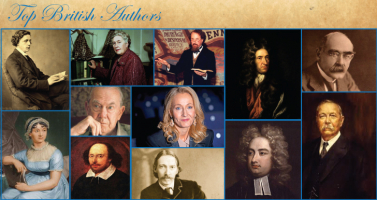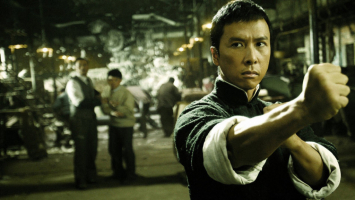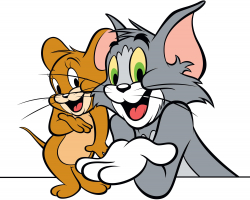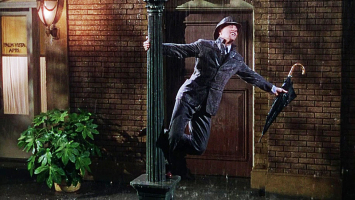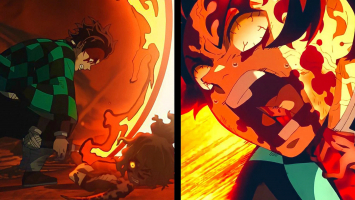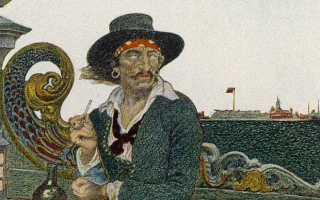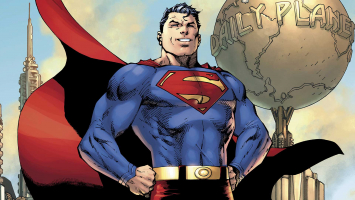Top 10 Best Superhero Cars of All Time
In the world of superheroes, we encounter not just mighty characters and super gear, but also impressive cars and devices that these heroes utilize to combat ... read more...crime. Some of these cars have become iconic symbols of our favorite superheroes. Here's a list of the top 10 best superhero cars of all time, including famous models and technologically advanced vehicles.
-
The Batmobile is one of Batman's best superhero cars, found in many different Batman stories. It has appeared in numerous Batman adaptations, each with a unique design and features. In the early 1940s, the first Batmobile appeared in Batman movies and comic books. It was a simple, red convertible car with a prominent bat symbol on the front.
The Batmobile from the 1960s "Batman" TV show, driven by Adam West's Batman, is one of the most well-known versions. It was a changed-up 1955 Lincoln Futura concept car with an excellent, sleek design. It had bat-shaped fins, a jet engine in the front, and lots of clever gadgets.
The Batmobiles in "Batman Forever" (1995) and "Batman & Robin" (1997) had a more vivid and colorful style. They had bright neon lights, a muscular design, and many gadgets and weapons. Christopher Nolan's Batman movies had the Tumbler, which was like a tough military car. They called it the Batmobile. It had things like rocket launchers and an escape pod. It was made to look more accurate and useful.
In the DC Extended Universe (DCEU), in movies like "Batman v Superman: Dawn of Justice" (2016) and "Justice League" (2017), Batman's Batmobile was like a heavily armored tank. It had advanced weapons and ways to protect itself. This matched how they showed Batman as more challenging and like a soldier in those movies.
Over time, the Batmobile has changed, following the ideas of different filmmakers and comic book artists. No matter how it looks, the Batmobile always shows that Batman is very serious about fighting crime in Gotham City.
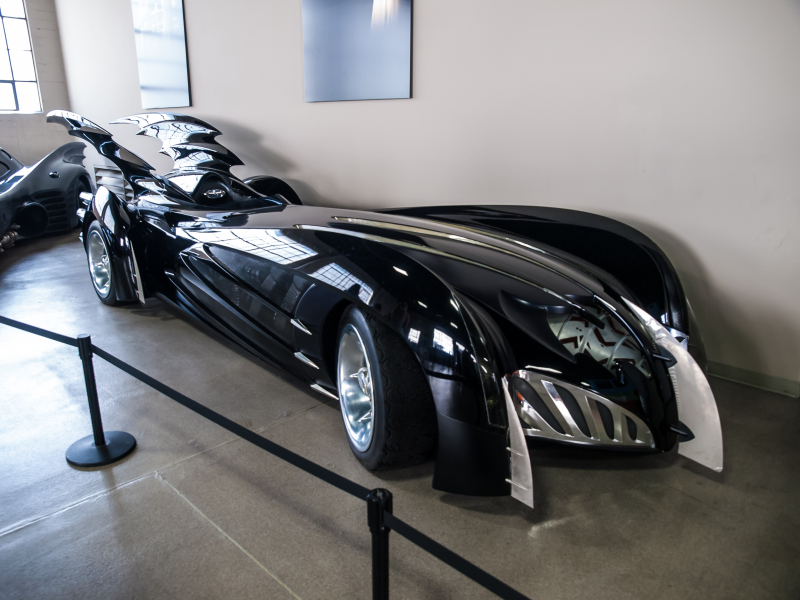
Photo of https://www.flickr.com/photos/wwarby/9641310176 Video by Rotten Tomatoes Classic Trailers -
The Spider-Mobile is a strange and unique vehicle connected to the Marvel Comics character Spider-Man. It first appeared in "The Amazing Spider-Man" #130 in 1974. Writer Gerry Conway and artist Ross Andru thought it up.
This vehicle was bright red and had a dune buggy design with spider-themed decorations. It had large spider logos on its sides and a roof that looked like a spider's web. The way it looked made it evident that it was connected to Spider-Man, just like his costume.
The Spider-Mobile was part of a deal between Marvel Comics and a car company called Corona Motors. They made it to help promote a new line of cars. It had unique gadgets for fighting crime, like web shooters, gas dispensers, and even a way to shoot out webbing to climb walls.
The Spider-Mobile didn't last very long in the comics. It was mainly featured in a story where Spider-Man and the Human Torch drove it across the country to show off the car. But surprisingly, the car was more trouble than help when fighting crime, so they left it in the desert.
In short, the Spider-Mobile is a memorable and unusual part of Spider-Man's story. People like it because it looks different and was made part of a strange collaboration. Even though it's not a big part of Spider-Man's crime-fighting tools, it's still funny and exciting in comic books.
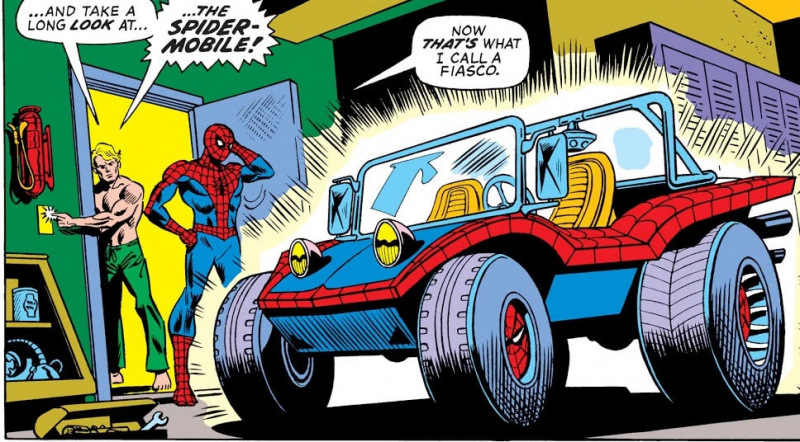
Screenshot of https://marvel.fandom.com/wiki/Spider-Mobile 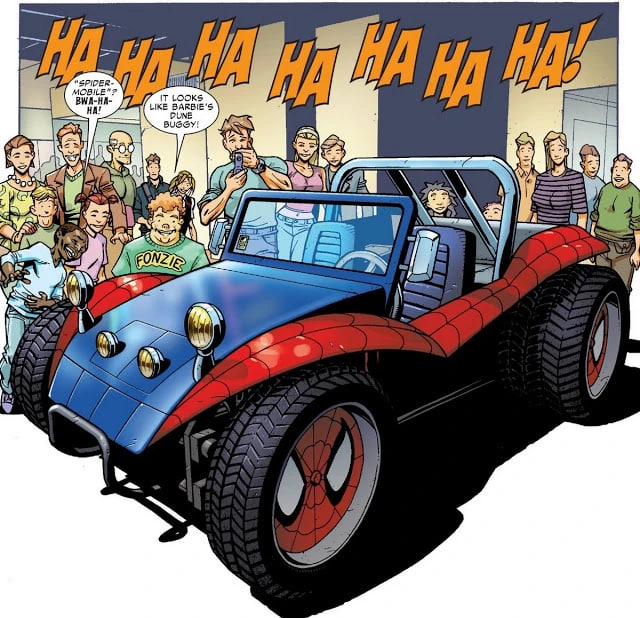
Screenshot of https://marvel.fandom.com/wiki/Spider-Mobile -
Wonder Woman's Invisible Jet is a famous and vital vehicle in DC Comics. It first appeared in 1942 and was created by writer William Moulton Marston and artist Harry G. Peter. The key feature of the Invisible Jet is right there in the name: it's invisible. That means you can't see it with your eyes, including the people inside it.
The Invisible Jet looks cool and futuristic, often with a sleek and streamlined design. It's fast, can travel in space, and is tough enough to handle harsh conditions. Sometimes, it also has powerful weapons for fighting bad guys.
The primary purpose of the Invisible Jet is to help Wonder Woman get around quickly and secretly. Because it's invisible, it's excellent for sneaky missions and going places unnoticed.
The Invisible Jet is a big part of Wonder Woman's superhero identity. It's recognized worldwide and has even appeared in cartoons, movies, and toys. Even though an invisible jet sounds pretty unbelievable, it's a vital part of Wonder Woman's character and her adventures in comics and pop culture.
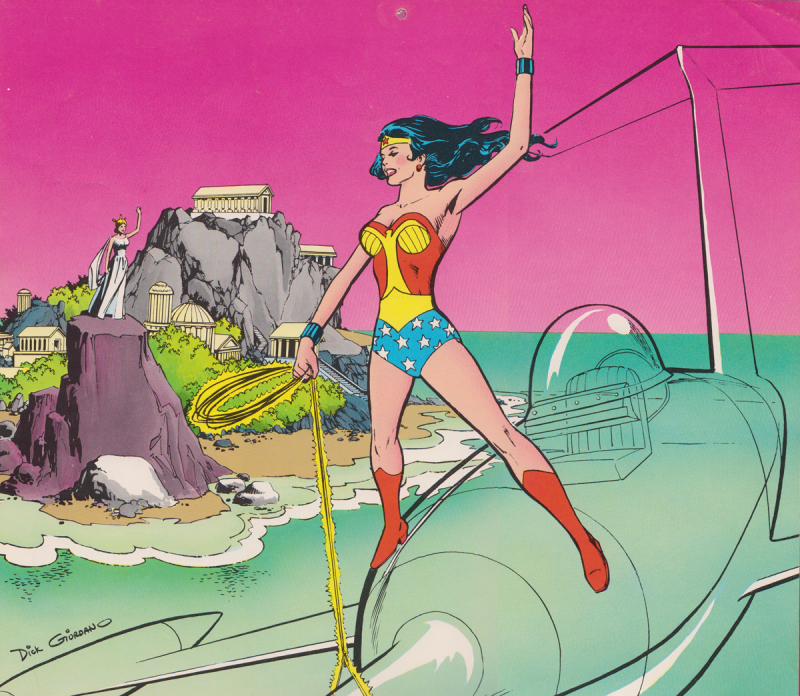
Photo of https://www.flickr.com/photos/calamityjon/3566204703 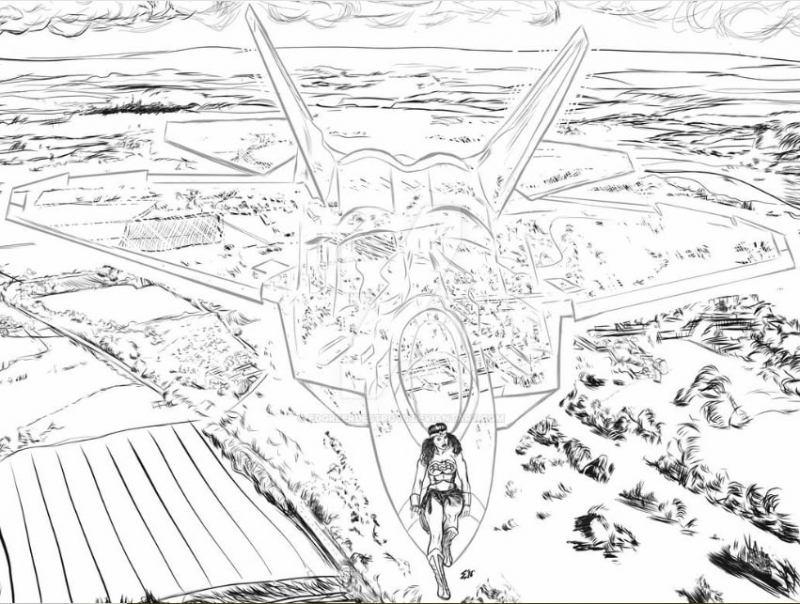
Photo of https://www.deviantart.com/edgreerdestroys/art/Invisible-Jet-634744011 -
The Black Beauty is a famous car linked with the Green Hornet, introduced in the 1966 TV series "The Green Hornet." It was designed by the same people who created "The Lone Ranger." This modified car is usually a Chrysler Imperial Crown and is known for its excellent black appearance with green stripes and accents that match the Green Hornet's colors.
What makes Black Beauty extraordinary is not just its looks but all the cool things it can do. This crime-fighting car has rockets, sprays gas, and has a robust front bumper to smash through things. In the TV series, it even had hidden machine guns behind its headlights and other high-tech gadgets. These features make it a powerful tool for the Green Hornet in its mission to fight crime.
The Black Beauty is mainly how the Green Hornet gets around secretly. It helps him get to the scene of a crime without being noticed. The car's weapons and gadgets help the Green Hornet take down bad guys. The Black Beauty is not just excellent; it also shows the Green Hornet's unique way of fighting crime.
Black Beauty has made a significant impact on pop culture and is an integral part of the Green Hornet's history. It has appeared in comics and a 2011 movie, showing that it's still loved and a symbol of the Green Hornet's fight for justice as a superhero.
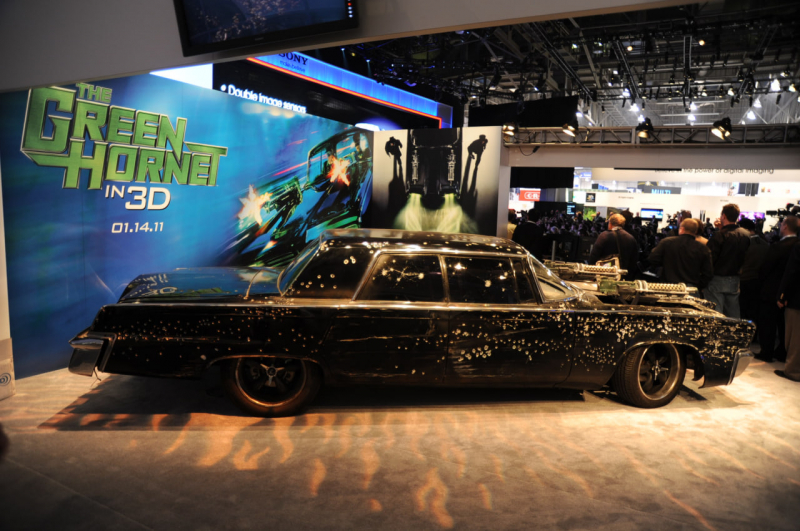
Photo of https://commons.wikimedia.org/wiki/File:Green_Hornet-Black_Beauty.jpg 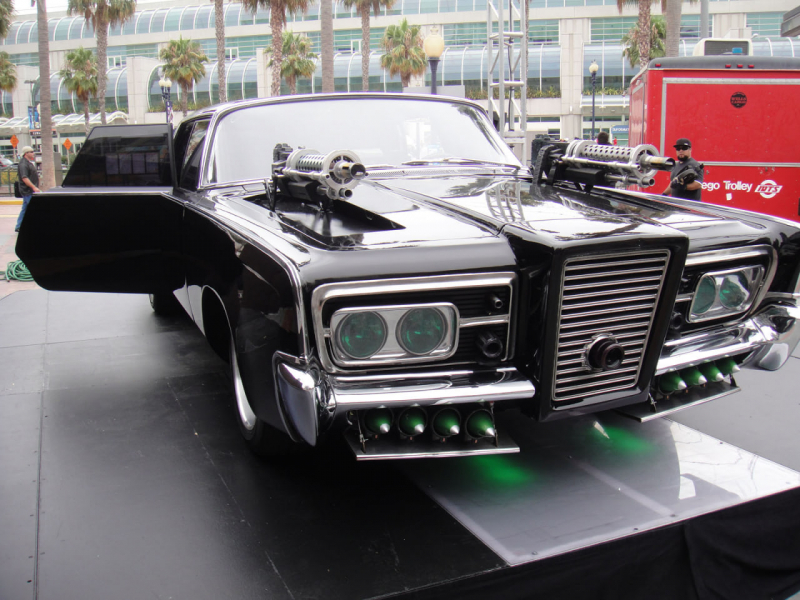
Photo of https://commons.wikimedia.org/wiki/File:Comic-Con_2010_-_Green_Hornet_Black_Beauty_car_outside_the_convention_center_%284859612248%29.jpg -
The Fantasticar is a fictional vehicle known for its role in the world of Marvel Comics. It serves as the primary means of transport for the Fantastic Four, the famous superhero team. It first appeared in "Fantastic Four" #3 in 1962 and was introduced by writer Stan Lee and artist Jack Kirby. From the start, it was designed to be a versatile and advanced vehicle that suits the team's unique superpowers and scientific skills.
The Fantasticar's appearance has changed slightly, but it usually looks like a sleek and futuristic aircraft. Its standout feature is that it can be taken apart into separate sections. This modular design allows each member of the Fantastic Four – Mr. Fantastic, Invisible Woman, Human Torch, and the Thing – to pilot their unit independently. This adaptability shows how the team can work together in various situations.
The main job of the Fantasticar is to provide the Fantastic Four with a fast and effective way to get around so they can quickly respond to problems and emergencies. Because it can be taken apart, it can be adjusted to fit the team's needs, whether they're doing scientific research, traveling to other dimensions, or fighting supervillains.
The Fantasticar has had a significant impact on popular culture and has shown up in different versions, like animated shows, video games, and the 2005 and 2007 "Fantastic Four" movies. It remains a vital part of the Fantastic Four's history, showing how they use their smarts and adapt to face superhero challenges.
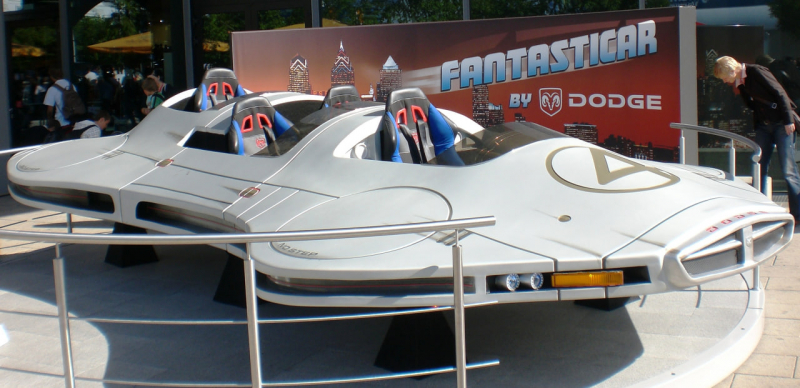
Photo of https://commons.wikimedia.org/wiki/File:Fantasticar.JPG 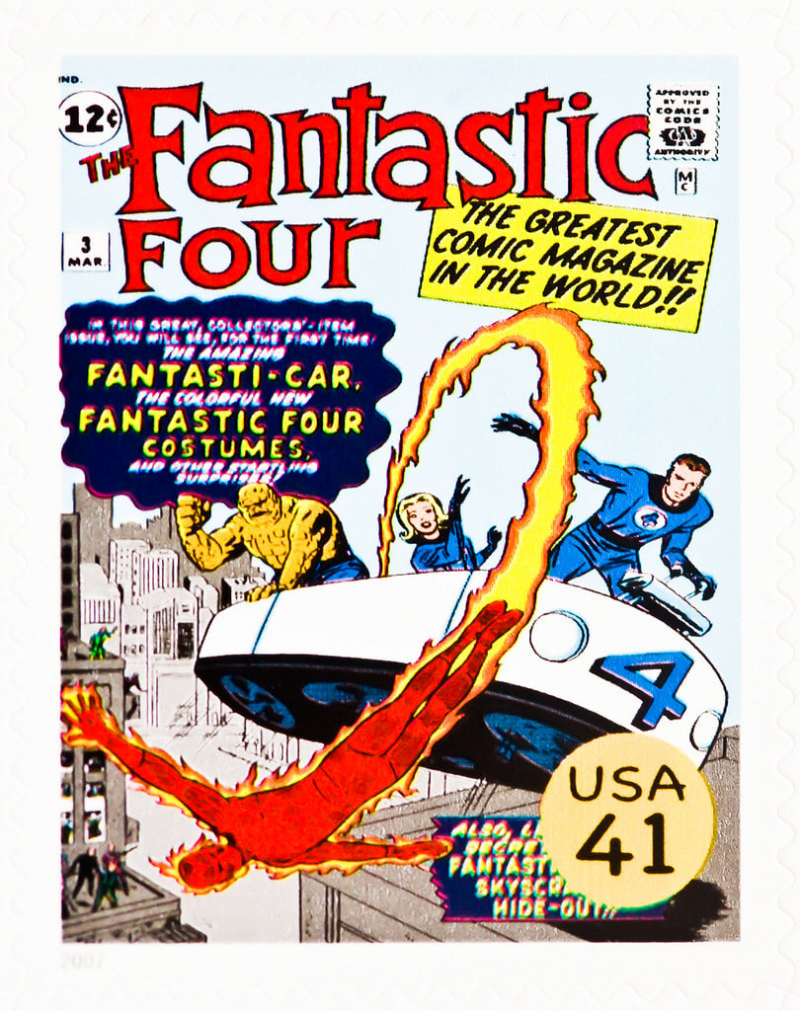
Photo of https://www.flickr.com/photos/thomashawk/8465940181 -
While not a traditional car, Iron Man's armor can be considered his vehicle. They are technologically advanced and have various weaponry, flight capabilities, and more. Each suit has a number, like Mark I, Mark II, and so on, to show its version. This helps keep track of the different designs and upgrades of the suits.
The very first Iron Man suit was the Mark I, and it was bulky, gray, and looked more mechanical. But the classic red and gold design we often think of with Iron Man started with the Mark III. It made its debut in "Tales of Suspense" #48. As time went on, each new "Mark" brought significant changes and improvements to the suits, showing how Iron Man's technology continued to get better.
One of the special suits is the Extremis armor, designed to work with Tony Stark's body to make him stronger and give him more control over the suit. The Hulkbuster armor is another famous one; it's extra big and strong to fight the Hulk. The Bleeding Edge armor takes the Extremis idea further, allowing the suit to appear using tiny technology instantly.
In addition to these suits, there are others designed for particular purposes. There's a space suit for space adventures, a deep-sea case for going underwater, and a stealth suit for secret missions. These suits show how Iron Man is ready for all kinds of challenges.
The suits of Iron Man have made their way into more than just comics; they've also been in movies. You might have seen Iron Man's cases in the Marvel Cinematic Universe (MCU). In the MCU, the instances have different features, like the Mark XLII's modular design and the Mark L, made using nanotechnology.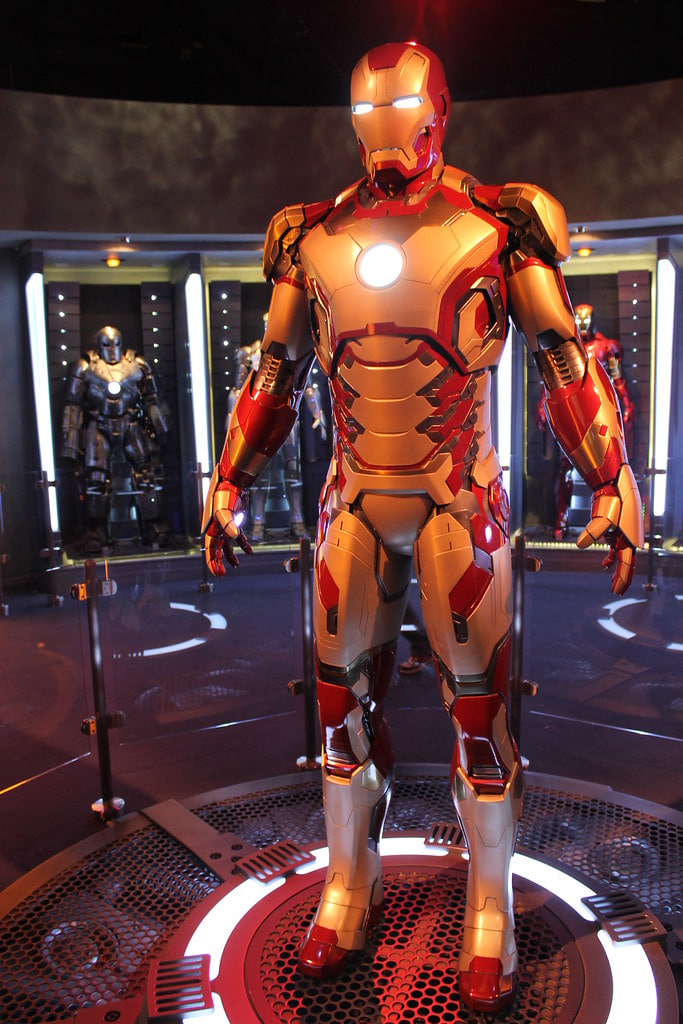
Photo of https://www.flickr.com/photos/lorenjavier/11711589843 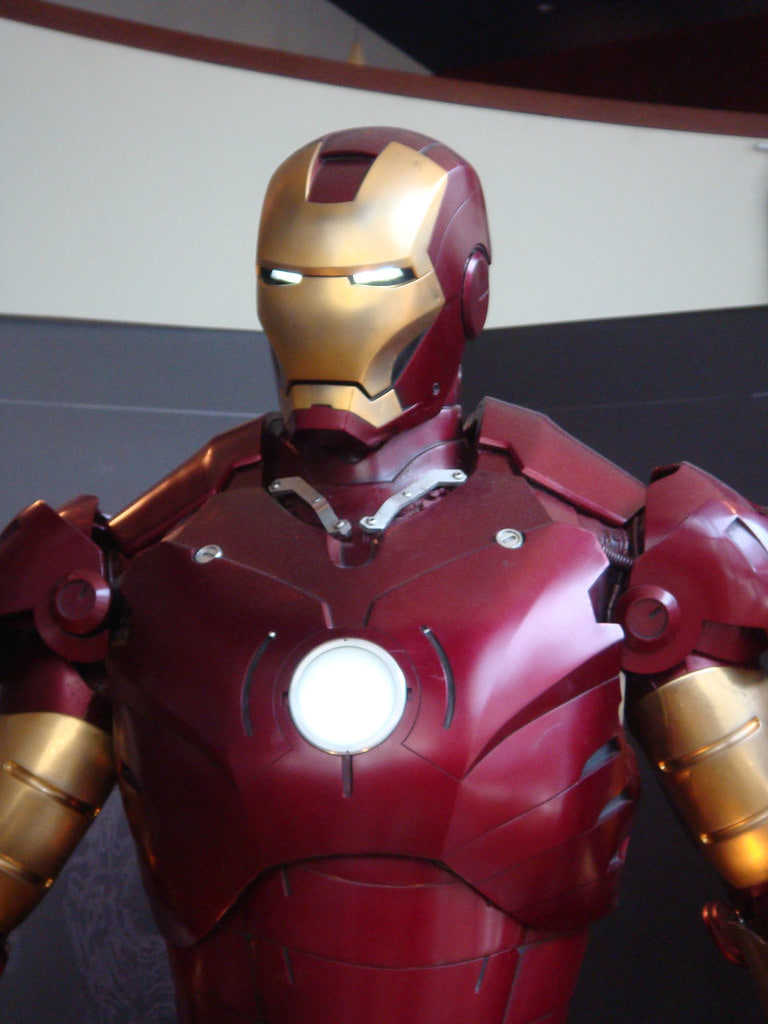
Photo of https://www.flickr.com/photos/popculturegeek/2633323086 -
The Punisher's Battle Van is a well-known and highly customized vehicle associated with the Marvel Comics character Frank Castle, famously known as the Punisher. This mobile arsenal first appeared in "The Amazing Spider-Man" #129 1974, created by writer Gerry Conway and artist Ross Andru. The Battle Van was designed as a crime-fighting vehicle, made to help the Punisher in his determined quest for justice.
The van's design is deceptive. It resembles a plain delivery van, often painted in unremarkable, dark colors. However, its ordinary appearance hides a treasure trove of weapons, gadgets, and tools. Inside, you'll find an array of guns, bullets, body armor, medical supplies, and advanced surveillance gear. It also has a computer system for research and communication. The van's design has changed to keep up with the Punisher's evolving needs and the use of more advanced technology.
The main job of the Battle Van is to be a mobile base for the Punisher. It's a way to transport his extensive collection of weapons, a place to plan his missions, and a fast way to respond to crimes. The van's weapons and equipment are critical tools for the Punisher's fight against corruption, reflecting his unwavering pursuit of justice, often driven by his tragic past.
In popular culture, the Battle Van has become a symbol of the Punisher's character, highlighting his no-nonsense approach to fighting crime and seeking justice. It has shown up in various comic book stories and adaptations of the Punisher character in different media, including animated series and live-action shows. The Battle Van is a testament to the Punisher's determination and resourcefulness in the battle against criminals.
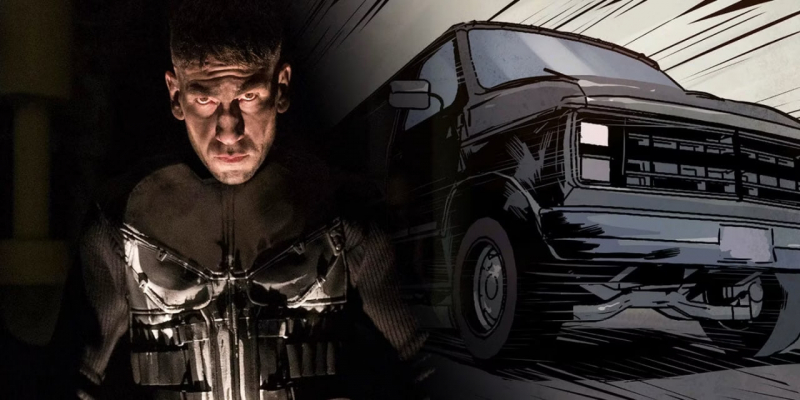
Screenshot of https://www.cbr.com/punisher-battle-van-history/ 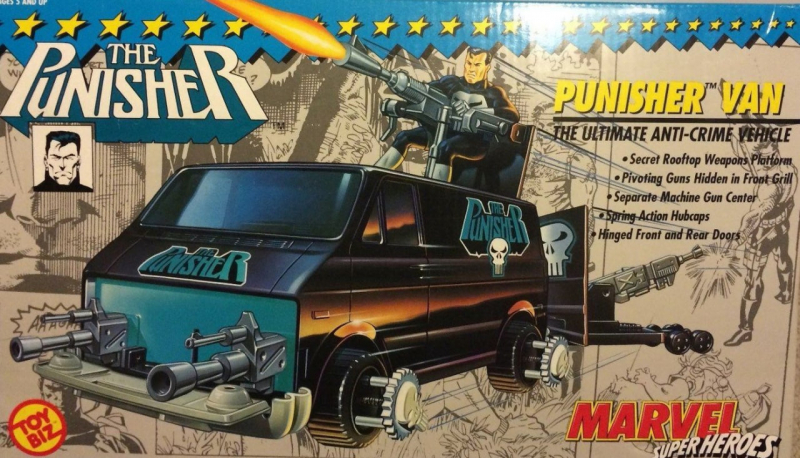
Screenshot of https://marvelousnews.com/252-26489 -
The Mach 5, a legendary racing car from the "Speed Racer" world, represents speed, innovation, and excitement. It first appeared in a 1966 manga series called "Mach GoGoGo," created by Tatsuo Yoshida, and later became a beloved anime series known as "Speed Racer." The Mach 5 quickly won the hearts of viewers and racing fans worldwide.
The Mach 5's design is instantly recognizable with its sleek white body and bold red "M" markings on the hood and sides. This futuristic racing car is not just about looks; it's loaded with advanced gadgets and features that set it apart. The steering wheel has special buttons, like the "Go" button for regular driving and the "Auto Jack" for making the car jump. The Mach 5 has a powerful engine, retractable saw blades, a periscope for underwater driving, and tires that adapt to different terrains. It also has "jacks" that can be used to overcome obstacles and rugged terrain.
Although the Mach 5 is mainly built for racing, it's versatile enough to handle various races, from standard racetracks to challenging off-road courses. Speed Racer, the central character in the series, drives the car. Speed Racer's adventures often involve racing competitions and the rivals he faces on the track.
The Mach 5's impact on culture is substantial, making it one of the most recognized and cherished superhero cars ever. "Speed Racer" has made a lasting mark in animation and entertainment. The Mach 5 continues to be celebrated in various adaptations, merchandise, and a live-action film released in 2008. The Mach 5 symbolizes adventure, innovation, and the enduring appeal of the need for speed.
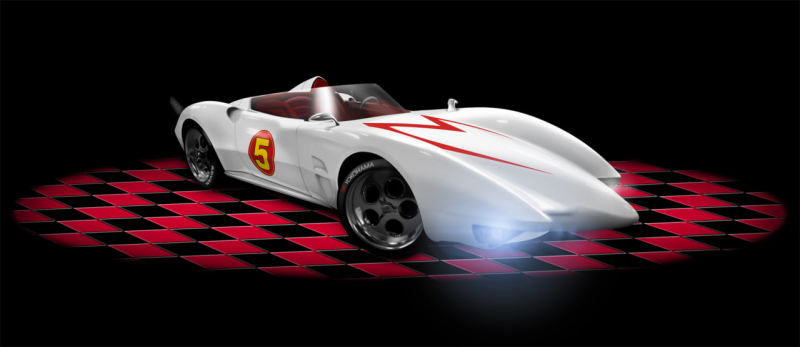
Photo of https://www.deviantart.com/retoucher07030/art/Speed-Racer-Mach-5-79323204 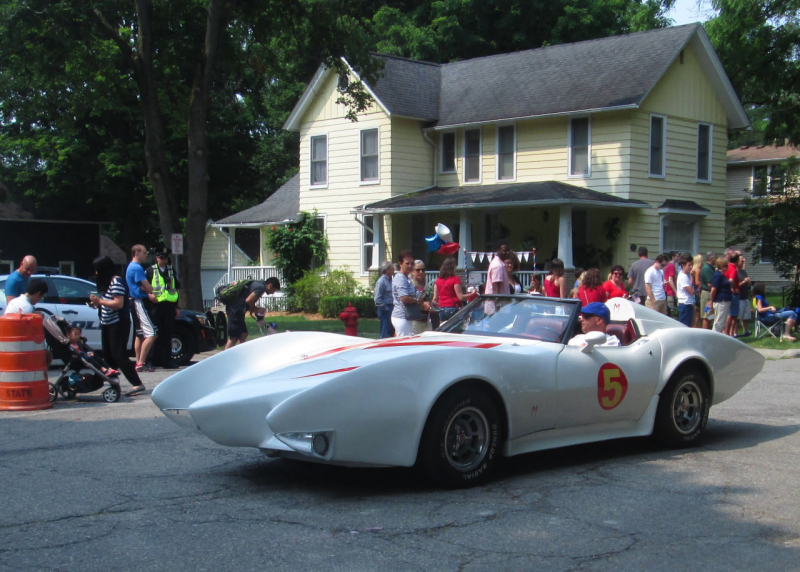
Photo of https://commons.wikimedia.org/wiki/File:Mach_5_Speed_Racer.jpg -
The X-Jet is a highly advanced aircraft closely connected with the X-Men, a famous group of superheroes in Marvel Comics. It first showed up in a comic called "The X-Men" #1 in 1963, and writer Stan Lee and artist Jack Kirby created it. The X-Jet was introduced as the primary way the X-Men get around, and the team is led by Professor Charles Xavier, also known as Professor X.
The X-Jet has a modern, sleek design with the team's "X" logo, usually black or dark blue. It's packed with technology that makes it stealthy, really fast, and well-protected to keep the X-Men safe during their missions. Sometimes, it has extra features like invisibility and powerful weapons.
X-Jet is the X-Men's primary way to get around. It helps them travel quickly and without being noticed so they can respond to problems and missions worldwide. The X-Jet also has equipment for medical emergencies, which is essential because some X-Men have special powers that can lead to injuries.
The X-Jet is a big part of the X-Men, and it helps them do their superhero work effectively. It has appeared in many X-Men comic book stories, animated shows, and movies like the X-Men films, where it shows off its excellent design and high-tech features. The X-Jet symbolizes the X-Men's commitment to making the world a safe place for mutants, even when many people fear them. It shows how the X-Men are ready for various missions, from rescuing mutants to battling supervillains.
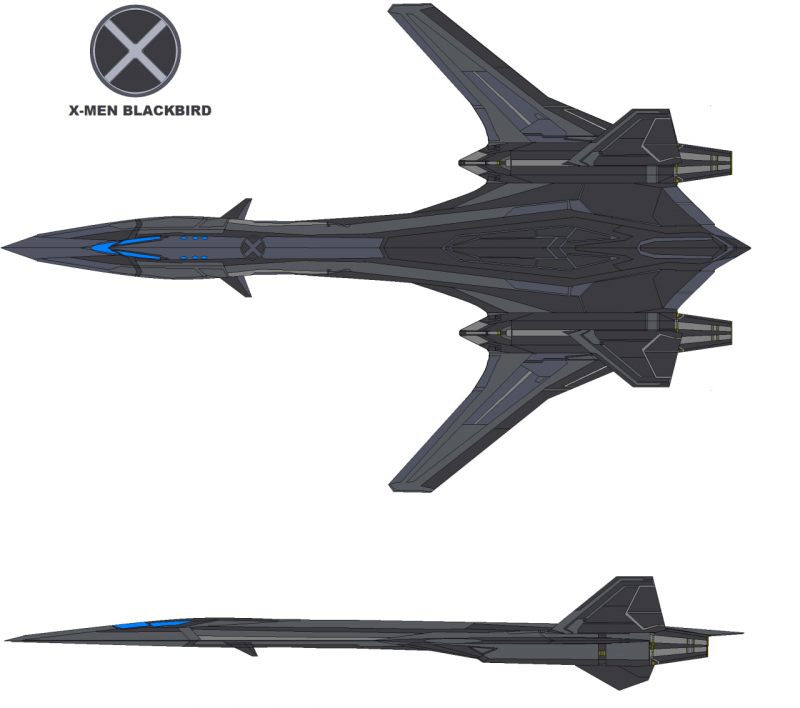
Photo of https://www.deviantart.com/bagera3005/art/x-jet-80455217 Video by BruceKenobi -
KITT, short for Knight Industries Two Thousand, is a fictional and highly advanced car that gained fame in the 1980s TV show "Knight Rider." It debuted in the first episode of the series in 1982, which Glen A. Larson created. KITT isn't just an ordinary car; it's portrayed as the creation of a fictional organization called Knight Industries, and it plays a central role in the show.
KITT's design is iconic, featuring a modified 1982 Pontiac Trans Am with a sleek black exterior. What makes it unique are the advanced and futuristic features. KITT has an artificial intelligence (AI) system, which allows it to communicate with its driver, Michael Knight. The car's dashboard has high-tech displays, and it has a distinctive red scanning light that moves from side to side, like an eye. It's also built to be tough, with armor that can withstand bullets and significant damage.
Plus, it's equipped with the famous Turbo Boost function, which lets it make impressive jumps over obstacles. KITT's primary role is to be the trusted companion of Michael Knight. Together, they tackle crime and work towards justice. Throughout the series, KITT is crucial in assisting Michael to take on criminals and villains.
KITT's impact on popular culture has been significant. It has become an iconic symbol of 1980s pop culture, and its distinct design and advanced technology captured viewers' imaginations. "Knight Rider" and KITT have left a lasting legacy, inspiring merchandise, adaptations, and references in other forms of media. KITT remains a symbol of advanced AI and futuristic car technology, making it a beloved and unforgettable character in television history.
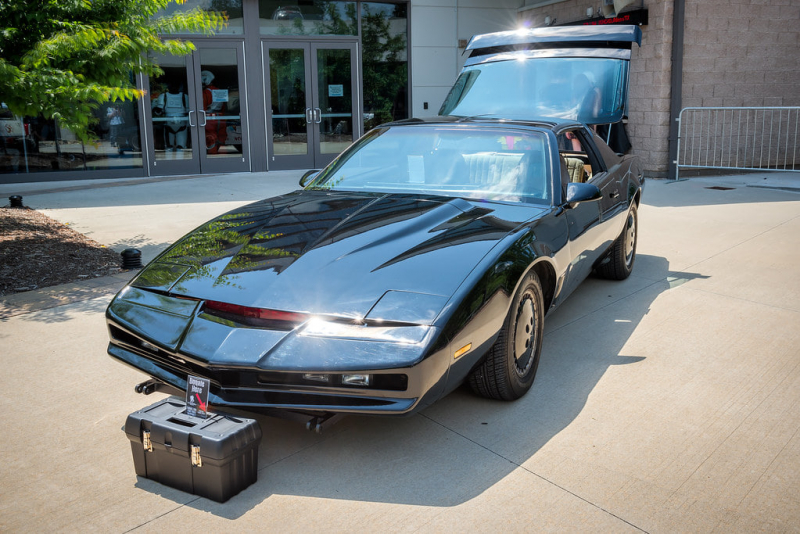
Photo of https://www.flickr.com/photos/kenlane/18807334120 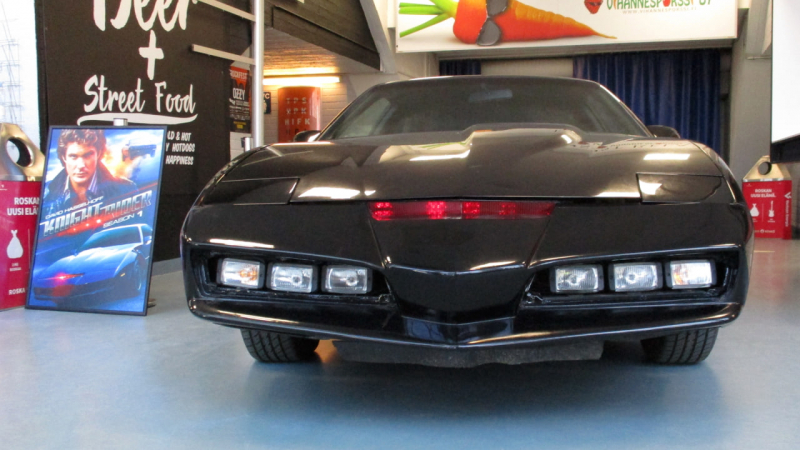
Photo of https://commons.wikimedia.org/wiki/File:KITT_%28Knight_Industries_Two_Thousand%29_02.png













